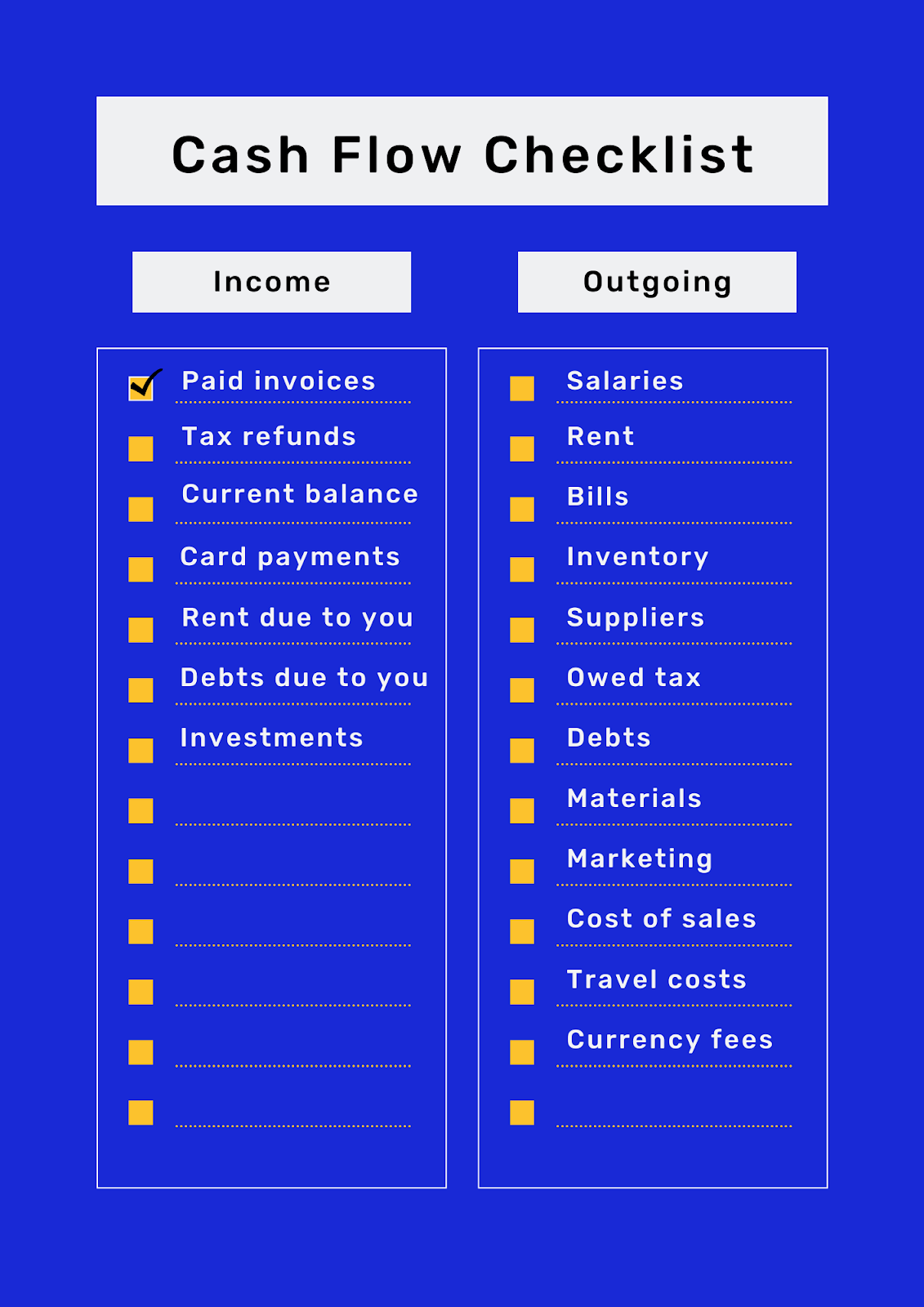Education
How to create an accurate cash flow forecast for your business
16 Jul 2024
Need to predict how much money will be flowing in and out of your business in the coming years? Find out how to do this accurately with a cash flow forecast.

Wouldn’t it be lovely to know what the future brings?
While we don’t have a crystal ball, we can help you strategically assess and calculate an accurate cash flow forecast for your business – one that will help you make insight-led decisions and prepare for the future.
Why does a cash flow forecast matter?
Cash flow is the lifeblood of a bustling business. In fact, according to QuickBooks, of the small businesses they studied, 61% struggle with cash flow, with almost a third struggling to pay their suppliers.
Cash flow can make or break a business. Get ahead of yours with a solid forecast.
Cash flow forecasts help you:
Remain aware of any possible upcoming complications, for example, any tax bills that may need to be paid soon.
Accurately plan for supplier payments, ensuring your services aren’t cut off.
Keep your team happy by ensuring their wages are paid on time.
Get on top of any clients who may be delayed in paying their invoices
If this last one is something you struggle with, you’re not alone, 87% of businesses receive payment for their invoices late. Keep a cash flow forecast on hand and an eye on any invoices to ensure you’re following up with clients before it becomes a problem.
Accurately predict income
Look at your historic income to predict future income. Then, add or subtract any major deals you may have lost or be working on closing. Be cautious when calculating future income, do not overexert yourself and try not to include deals that are only a maybe.
Do remember to include:
Income from signed deals
Forecasted customer payments
Rent due to your company
Tax repayments
Upcoming investments
Your current balance (any cash your company currently holds should be included as an addition on the first month of your forecast)
It’s important to remember you’re looking at cash here, not invoices, so input the amount into the month you believe it will be paid, not the month you raise the invoice. For example, if you set 30 day payment terms on your invoices, and you plan to raise a £2k invoice for Client A in May, you will want to input the income into June, not May.
Realistically assess outgoings
While putting together your cash flow forecast, include predicted numbers for any:
Salaries
Supplier payments
Purchase orders
Bills
Rent
Taxes (including corporation tax, employers national insurance, VAT)
Debt repayments
Inventory
Materials
Marketing costs
Cost of sales
Travel costs
Currency fluctuations and fees if you deal internationally
Add in a contingency number for outgoings to cover any possible losses that may arise, for example, if a repair is needed on a certain piece of equipment in the coming months.

Put it all together and review
Calculate the monthly amounts you are left with. Remember to bring forward any surplus on a month to month basis. If you are in the minus in any one month, consider your options today. You can either reduce your outgoings for that month, work towards increasing your income, or apply for funding if you know you can repay it a little later down the line.
As you move through the year, adjust your forecast regularly with the actuals to give yourself a better idea of what tomorrow brings.
Manage cash flow with a business loan
Looking for a business loan to help you manage cash flow? We help connect borrowers to our network of over 120 lenders. Click the link below to find out how much you could be eligible to borrow. Getting a quote won’t affect your credit score.
Please note that the information above is not intended to be financial advice. You should seek independent financial advice before making any decisions about your financial future.
It’s important to remember that all loans and credit agreements come with risks. These risks include non-payment and late-payment of the agreed repayment plan, which could affect your business credit score and impact your ability to find future funding. Always read the terms and conditions of every loan or credit agreement before you proceed. Contact us for support if you ever face difficulties making your repayments.
Funding Options, now part of Tide, helps UK firms access business finance, working directly with businesses and their trusted advisors. Funding Options are a credit broker and do not provide loans directly. All finance and quotes are subject to status and income. Applicants must be aged 18 and over and terms and conditions apply. Guarantees and Indemnities may be required. Funding Options can introduce applicants to a number of providers based on the applicants' circumstances and creditworthiness. Funding Options will receive a commission or finder’s fee for effecting such finance introductions.
Apply for Business Finance
Check your eligibility using our online form without affecting your credit score.
Apply HereSubscribe to our newsletter today
Sign up for the best of Funding Options sent straight to your inbox.
